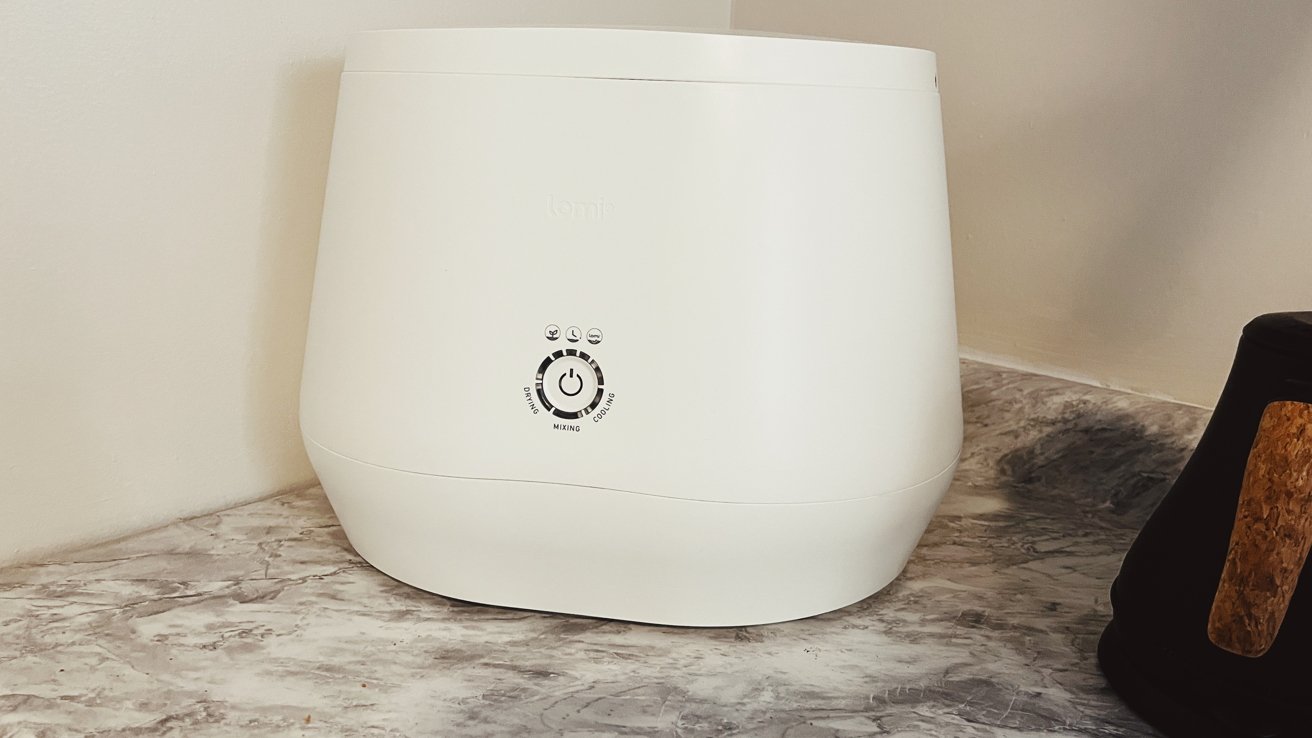
Pela's countertop composter Lomi brings the eco-friendly practice of composting out of the backyard and into your home.
Lomi is a countertop composter for disposing of food waste, which also promises to keep your houseplants happy and reduce your carbon footprint. It was designed by Pela, a producer of a biodegradable line of phone cases and accessories for the iPhone and other Apple devices.
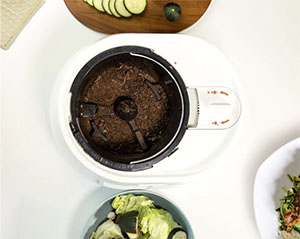
Pela Lomi
Buy at Amazon
Buy at Best Buy
Buy at Pela
Why you shouldn't throw your food waste into the garbage
Before we get started, let's address the number one problem Lomi wants to solve: food waste.
Most people are under the assumption that food waste is pretty safe to throw away. After all, organic material decomposes — famously so. We've all forgotten a banana on the counter at least once.
Believe it or not, food waste doesn't always break down in landfills, and when it does, it doesn't always do so in the best way possible.
Landfills are anaerobic environments, ecosystems that don't have enough oxygen to undergo the "normal" biodegrading process.
When organic materials — especially food and yard waste — are thrown into the landfill, they are quickly buried by layers of other garbage. Then, starved of oxygen and light, much of the organic material festers.
When it does finally decompose, it off-gasses methane. While some landfill facilities have begun capturing methane to create electricity, many have not.
Composting food scraps, on the other hand, is significantly better for the environment. Traditionally, composting requires a mixture of nitrogen-rich ("green") waste and carbon-rich ("brown") waste, which then breaks down over time into a nutrient-dense material that you can use to supplement your garden.
Typically, this is done in open-air piles, regularly watered, and then turned with a pitchfork or shovel to help provide oxygen and evenly distribute heat. It's a labor-intensive process, but it significantly benefits the environment and the person maintaining the compost pile.
But, not everyone can maintain a compost pile — and that's where Lomi comes in.
What Lomi is
Lomi is a "countertop composter." Countertop composters are machines designed to simulate the early stages of composting.
What we like best about Lomi is that it is designed with users in mind and is extremely easy to use.
To use Lomi, you open the lid, dump your organic scraps inside Lomi's bucket, press a button, and walk away.
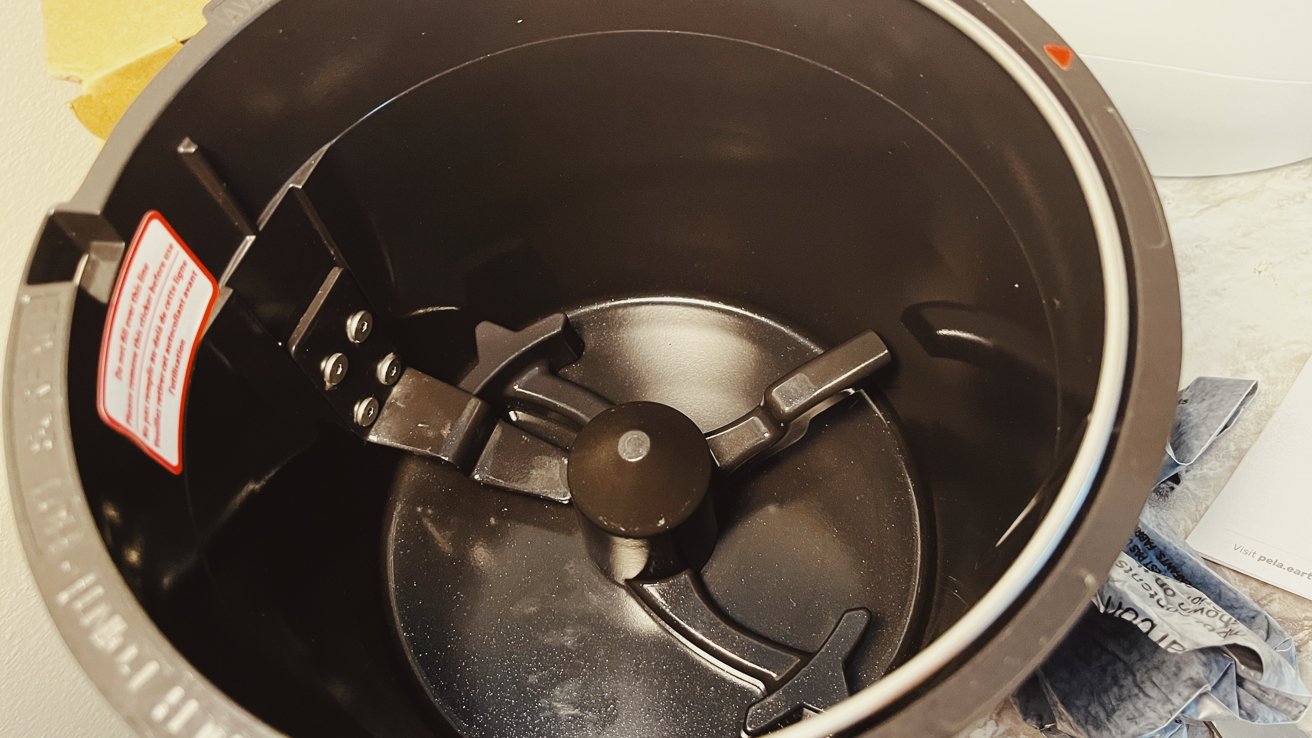
It then grinds the scraps and adds a bit of heat, which helps to jump-start the composting process. The process takes between 3 and twenty hours to complete, and what comes out depends on what you throw in and what mode you use.
Additionally, Lomi also looks better than most countertop composters. Its contemporary design is friendly and could easily be mistaken for a humidifier or similar home appliance.
Setting up Lomi
Setting up Lomi is extremely easy. All you'll need to do is pop open the two filter chambers, fill them with activated charcoal pellets, and put them back in.
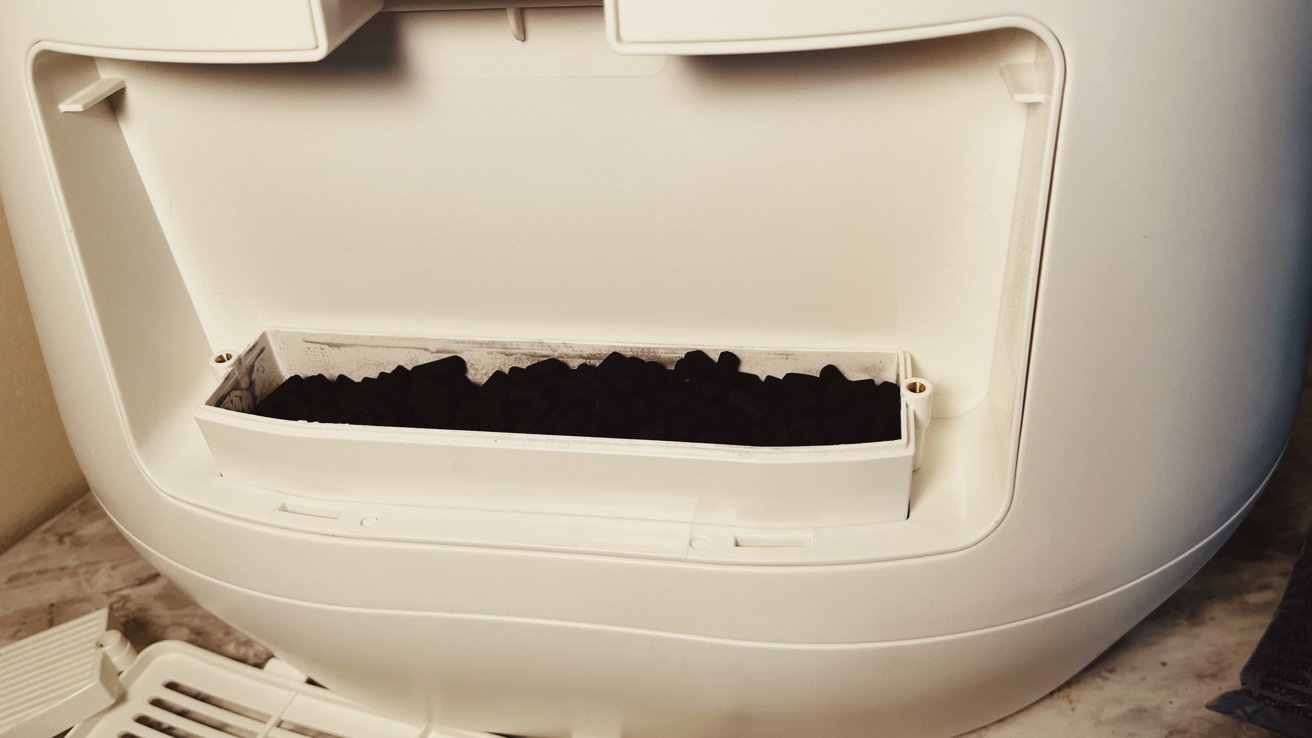
After that, Lomi encourages you to toss the biodegradable plastic bags that held the charcoal into your first cycle.
Depending on use, the charcoal will need to be replaced every three to four months. Pela sells a subscription that will send you the pellets. While that is handy, we'd like to point out that it's the same charcoal pellets used in aquarium tanks, so you can find it cheaper elsewhere.
What can and can't go into Lomi
Many things can go into Lomi, and Pela has created a list of stuff you can chuck inside.
- Fruit and vegetables*
- Coffee grounds
- Eggshells
- Meat scraps*
- Rinds and peels*
- Yard and houseplant trimmings
- Lomi approved bioplastics, paper products, and packaging
- * Provided they follow Lomi's guidelines for individual items.
- Dairy products, like cheese, yogurt, milk
- Chemical-treated plants or yard trimmings
- Wax paper, glossy paper
- Diapers
- Animal feces
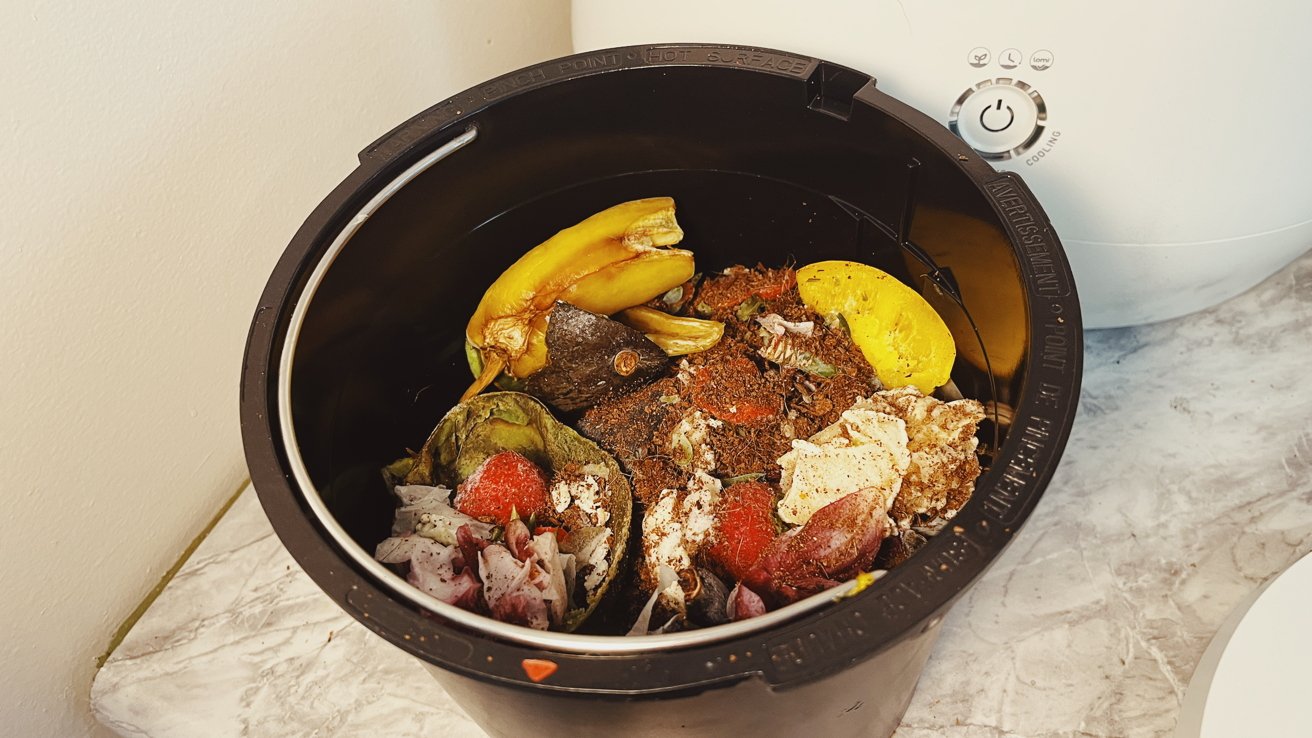
We will note that Pela seems torn on whether or not you can compost meat in Lomi. Sometimes Pela says it's okay, but other times, it doesn't.
To air on the safe side, we suggest not chucking meat into Lomi if you plan on using it for your indoor potted plants.
What comes out
Now's a great time to talk about what comes out of Lomi after it runs a cycle. Lomi has three different cycles you can choose from, each resulting in a different type of end-product.
Eco Mode: This quick mode is designed to create a material perfect for chucking into your backyard compost pile or green waste bin. Unfortunately, it's not appropriate for adding to your houseplants, as it hasn't been broken down enough and doesn't contain enough microbes.
Grow Mode: A longer, more energy-intensive mode that uses a Lomi Pod — a compost probiotic of sorts — to create nutrient-rich dirt that you can add to your plants at a 1-to-10 ratio. You can also dispose of it in your compost pile or green waste bin.
Lomi-Approved Mode: Lomi allows you to break down approved bioplastics, paper products, and compostable packaging. This includes Pela phone cases and Pela Apple Watch bands! The end-product of this cycle is perfect for chucking into your green waste bin or household garbage.
How well it works
Lomi works pretty well for what it is. However, we were surprised by how quiet Lomi was, even when it dealt with hard objects like corn cobs.
Our first batch of soon-to-be compost included avocado skins, pepper trimmings, fallen orchid blooms, golden pothos trimmings, grape stems, some old coconut coir from a repotted plant, and the occasional plate scrapings.
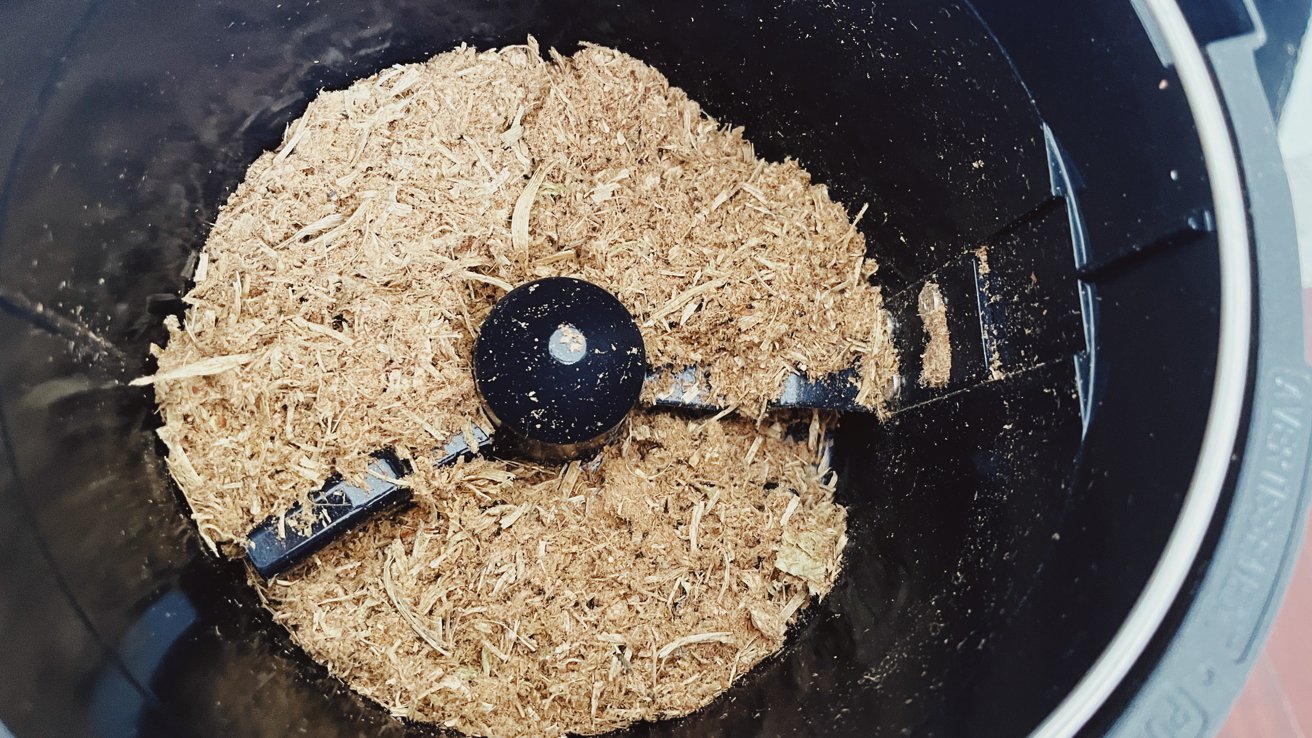
It consisted of about three days worth of Lomi-approved materials. Larger households will probably fill up a Lomi at least once a day.
Perhaps the best part about Lomi is its hands-off nature, as it's essentially a set-and-forget device. Once you throw your food scraps into it, you can hit the button and walk away.
When you return, Lomi will have made quick work of your organic material, leaving behind a brown, mulch-like substance.
We were very impressed with how well Lomi manages odors. The carbon filter helps filter out smells while running, and for the most part, it didn't even get particularly gross while we dumped scraps in throughout the day.
Of course, if you leave food scraps in there for a few days, it will smell pretty gross whenever you open it up. There's a better solution for that, though.
If we know we're going to take a little while before we fill Lomi's bucket up enough to run a cycle, we store our food scraps in the freezer — make sure to let them defrost inside of Lomi for a while before you run a cycle.
What comes out of Lomi doesn't smell bad at all. Instead, it smells mostly like organic matter. Our first batch smelled mostly like mulch and a little like vegetable soup, and the second batch smelled faintly of bananas.
Is it really compost?
The material that comes out of Lomi isn't the same material you'd get from a traditional compost pile. Instead, it's more of immature compost, with significant decomposing left before it becomes mature.
That's why Lomi recommends mixing it in a 1-to-10 part ratio, one part Lomi dirt to 10 parts soil, to help feed your plants. Lomi's dirt will continue to break down as you water your plants, releasing nutrients into the soil.
Mixing it in higher ratios can damage your plants, just like any other fertilizer.
If you want to age the end-product, many folks have found that you can mix it with soil and leave it to age somewhere that gets moderate sunlight. Because it's already been ground up in the machine, Lomi's dirt breaks down in a compost pile, bin, or bucket very quickly — a couple of weeks compared to an entire season for traditional compost.
Who Lomi is for
Lomi is designed to help reduce food waste for people who do not have access to community-supported composting programs or for those who may not be able to maintain a traditional compost pile.
While this seems like it would be explicitly for apartment dwellers — which certainly is Lomi's core demographic — it's not just smaller living spaces
For example, we don't live in an area with a community-supported composting program. We don't even have a green waste program at all — the city expects you to dispose of your food in the garbage and your yard waste out of your pocket should it not be able to fit in a garbage bag.
And while backyard composting isn't explicitly banned here, there are some concerns with just throwing food waste on the ground. Cats in this area tend to be free range, we have a neighborhood groundhog, and there have been — on occasion — issues with bears.
So, yes, Lomi is targeted toward those who live in apartments, but it isn't exclusively for those in apartments. Plenty of homeowners and plant lovers could get use out of Lomi as well.
Drawbacks
There are a few drawbacks to Lomi that are worth taking stock of before purchasing one.
First, it's not a small machine. Lomi has a substantial physical footprint, and if you've limited space in your home, Lomi may not fit. We couldn't store Lomi on our countertop without sacrificing food prep space.
Fortunately, we've got other places where Lomi can live, which means it still fits into our lives pretty well. However, that may not be the case for apartment dwellers with limited space.
Next, Lomi does have to use electricity to do its job. Unlike a traditional compost pile, which is heated by the sun, Lomi needs to tap into the power grid.
As a result, Lomi has a larger carbon footprint than a traditional compost pile.
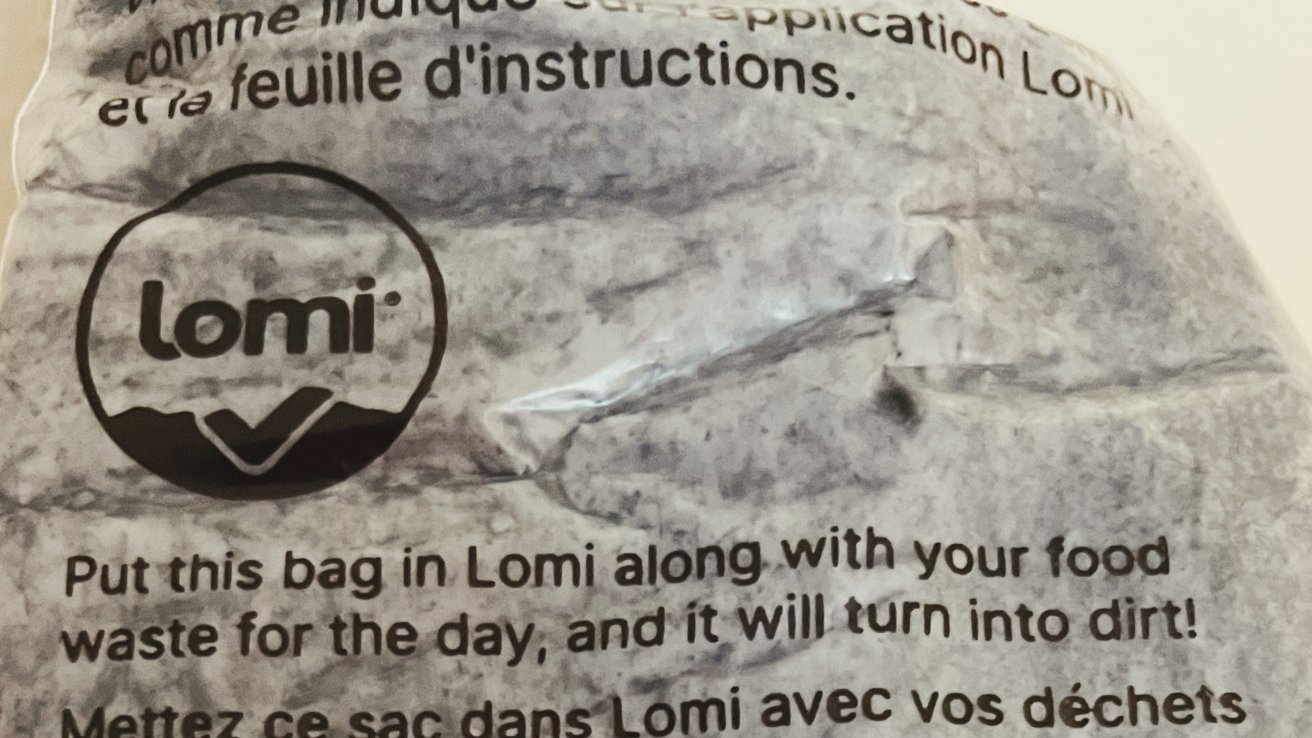
In fact, Pela even tells people who can maintain a traditional compost pile to avoid Lomi altogether. After all — why spend $500 on something you could do for the cost of a pitchfork and some chicken wire?
Of course, food sent to landfills produces methane, a greenhouse gas, which isn't ideal either.
Pela estimates that even if Lomi uses non-renewable energy, Lomi can prevent 200kg of carbon emissions per year generated by sending the food to a landfill — assuming that Lomi composts 365 kilograms of food waste per year. That's about an 80% reduction in carbon emissions.
As a side note: if you're worried about what Lomi costs to run, it's not all that expensive. The US average electricity price hovers around 14 cents per kWh, meaning that a Lomi Grow Cycle should cost about 14 cents to run.
The Eco Mode only costs about 8 cents to run.
The only particularly frustrating thing about Lomi is that it isn't quiet. Not the grinding — that's pretty easy to ignore — but the beeping.
Pela jokes about this, stating that "Lomi likes to talk," but we found the beeping to be a significant drawback to the unit.
It beeps. It beeps loudly. It beeps when you open it, it beeps when you close it, and it beeps when you press the buttons. Then, when it finishes its cycle, it beeps again.
If you spend a lot of time on calls for work, or if you have your bedroom — or your kids' bedrooms — close to the kitchen, this is a significant problem. So should Pela release a Lomi 2.0, we'd like to see the ability to turn off the beeping.
Last, it's not cheap. As stated above, Lomi costs $500, which may not be in the cards for many people.
Unfortunately, this is true of all countertop composters — and many non-electric composters, too.
Vitamix's FoodCycler, a similar machine, retails for around $400 but doesn't produce an end product that can be added directly to plants. You can't refill the FoodCycler's filters, and they'll cost you $40 a pop.
We're hoping that eventually, someone comes to market with a product in the $200 range, but until then, Lomi — and its countertop composting cousins — may only be for certain folks.
Hopes for future releases
Should Pela continue to iterate on Lomi, we'd like to see some app integration. Lomi is practically begging for it!
We'd love to have an app that offers a countdown until the cycle is finished, monitors filter health, and allows us to quickly check what items can and can't be added in which modes.
Loud, counter-eating, but makes excellent dirt
Lomi is a great way to prevent your food waste from going to the landfill while providing you with a valuable end product. This is true whether you solely run it on eco-mode and dump the dirt into your compost pile or green waste bin or run it in grow-mode to supplement your plants.
While we don't think it's for everyone, we believe it's still doing meaningful work. And, if you're a plant parent, you really can't beat having your own unlimited supply of plant-ready fertilizer.
Where to buy
If you're in the market for a Lomi of your own, you can head to Amazon.com, Best Buy or Pela's website. Lomi costs $500 and is often in short supply. We encourage those interested in Lomi to purchase one as soon as they are available, as they tend to go fast.
Rating: 3.5 out of 5 stars
Pros
- Very easy to use
- Creates nutrient-rich fertilizer for houseplants, gardens
- Reduces food waste sent to the landfill
- Minimal to no odor
- Can be used to supplement yard-waste composting, especially leaf mold composting
- Easy to clean and maintain
Cons
- Loud, frequent beeping
- Expensive to purchase
- Large footprint makes it difficult to store
- Lomi pods and charcoal are an additional expense